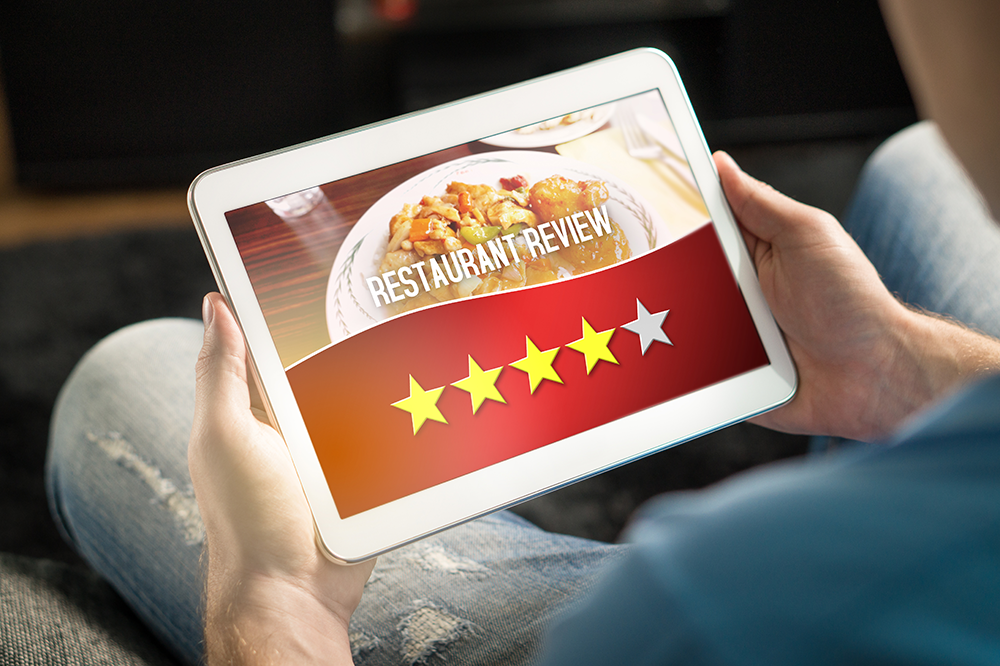
Did you know that 60% of customers read an online review first before going to a restaurant?
Additionally, 42% of U.S. customers tried out a restaurant for the first time because of its social media posts.
For restaurant owners, this means that it’s essential to keep your presence on social media active and engaging. A strong social marketing game opens a pathway of opportunities for restaurant websites (including yours!) to acquire visitors that will convert to both in-person visits and online orders.
In this article, we’ll share how you can increase your restaurant’s website traffic by creating a better social media presence.
Pro tip: A positive brand image across all your channels undoubtedly influences a consumer’s decision to support your restaurant and recommend it to their peers. You can opt to team up with popular reputation management agencies to monitor and protect your brand online.
7 Tips to Increase Your Restaurant’s Web Traffic Using Social Media
From optimizing the bio sections on your social media platforms to adding social logos and links to your website, here are seven tips you can use to increase your website’s traffic using social media.
1. Optimize Your Restaurant’s Social Profiles

Potential diners look at your profile section when they want to understand more about your brand.
Your profile section should clearly and quickly communicate your brand’s unique value proposition or the important details that set you apart from the other restaurants.
For example, if your restaurant offers a buffet, a special Happy Hour or Taco Tuesdays, say it loud and proud in your profile section to catch your potential diner’s attention.
Don’t forget to end your bio with a conversion call to action (CTA) that will funnel your social media visitor to your website’s homepage to explore more about your brand.
2. Expand Your Target Audience Using Hashtags

According to a recent study, Instagram accounts with under 5,000 followers received an average reach rate of 36.85% per post when hashtags were placed in the caption.
Utilizing hashtags in your Instagram posts can increase your reach and expand your target audience.
When you plug a hashtag into your post’s caption, your post will automatically appear on that specific hashtag’s page.
Say you want your Instagram post to be on the radar for restaurants in New York City. By adding location-based hashtags such as #nyc, #newyorkcity and #nycrestaurants, your post will show up on a hashtag gallery featuring every Instagram post that has similar hashtags. This can help you find potential diners that are either in the area or hungry, or planning a trip and decide to make your restaurant a destination.
3. Utilize Geotargeting

Speaking of location-based posts, geotargeting is another method where you can deliver your content to your potential target audience based on where they live.
Social media platforms like Instagram, Facebook and Twitter allow you to target your audience by country, state, and city.
With Instagram, you can use location-based hashtags for free.
On the other hand, Facebook ads allow you to craft geotarget promotions similar to Twitter’s promoted tweet, for a price of around $2 per click.
4. Post Your Restaurant’s Daily Specials

Picture this: An employee is sitting in his office chair thinking about what he can grab for lunch. It’s an hour before his lunch break, so he decides to scroll through his social media feed for a little lunch time inspiration.
He comes across your post featuring your lunch special for the day – a decadent image of a juicy steak with a side of garlic mashed potatoes and grilled corn.
He sees the lunch price advertised and notes that it’s more affordable than the usual steak meals he’s eaten in the past. And the portion – he may even have leftovers to bring home for dinner! He’s basically drooling at this point, and he asks some work friends to tag along with him.
Posting your daily special on your social media account together with mouth-watering images can bring in hungry guests who initially discover your brand through social media, then head to your website to find out more.
When you pair your posts with geotargeting, such as location-based hashtags, you can extend your reach to potential diners in the area who are looking for somewhere new to try.
5. Use Social Proof

Social proof is vital for attracting interest.
When a customer recognizes a best-seller stamp beside an item on your menu, the first thing that comes to their mind is “this must be one of the best meals on the menu,” which instantly brings them to the consideration stage where they’re thinking about trying it.
Similarly, when you run a Facebook ad with your current customers raving about how good your food and customer service are, new potential guests are also likely to become interested.
Social proof allows your business to look credible and trustworthy because your customer’s voices and testimonials ultimately carry a ton of weight for your brand reputation.
Integrate customer reviews, feedback, and comments into both your website and social media content.
Position your restaurant’s social proof on your website’s homepage to attract interest right off the bat. You can also use social proof as content for your social media accounts.
If your restaurant has been featured in publications or mentioned by the media, for example, you can create a post to express enthusiasm about the feature and show credibility.
6. Engage with Customer Reviews

Whether it’s an exceptional or dreadful dining experience, many customers leave a review to share their experience, help fellow customers make an informed decision when dining or compliment a restaurant for their service or menu items.
Replying to your customer’s reviews helps build your online reputation. By replying and acknowledging their experience, you’re saying “I see you, I hear you and I appreciate your feedback.”
When your customer leaves you a positive review, thank your customer. For negative reviews, make sure that you acknowledge your customer’s pain points and explain that you’re open to helpful criticism regarding areas you can improve on.
Above all, ensure that you’ll work towards providing them with a better service moving forward.
When should you respond to your customers’ reviews? A good rule of thumb is anywhere within one to two days.
7. Post Regularly to Maintain Consistent Interest

Consistent posting on your social media accounts can help your brand maintain your current audience, entice new followers, and acquire new leads.
Let’s say you posted a wine image last Wednesday with the hashtag #winewednesdays.
If you want themed-nights in your restaurant to be a weekly post, ensure that you consistently post wine images or relevant content every Wednesday, since your followers are going to anticipate #winewednesdays from now on.
The question is: What is the cap for too much posting?
Some studies say three per day is the maximum, but according to Hootsuite, a good measure is at least one post and no more than two posts per day.
Going beyond two posts per day might result in a drop in engagement.






